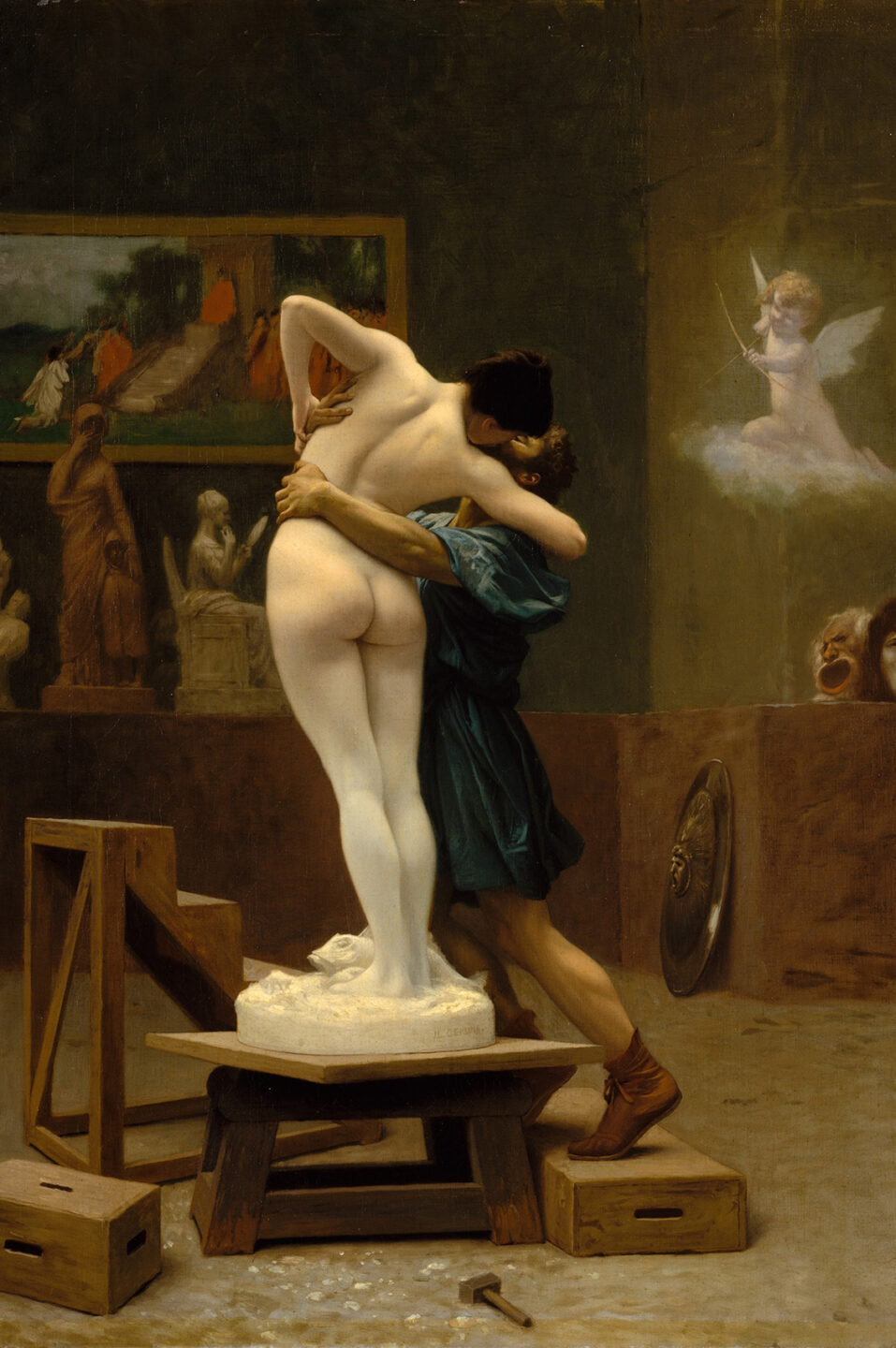Pygmalion is a play by Irish playwright George Bernard Shaw, named after the Greek mythological figure.
Shaw took his title from the ancient Greek legend of the famous sculptor named Pygmalion who could find nothing good in women, and, as a result, he resolved to live out his life unmarried.
However, he carved a statue out of ivory that was so beautiful and so perfect that he fell in love with his own creation.
The statue was so perfect that no living being could possibly be its equal. Consequently, at a festival, he prayed to the goddess of love, Aphrodite, that he might have the statue come to life.
When he reached home, to his amazement, he found that his wish had been fulfilled, and he proceeded to marry the statue, which he named Galatea.
Even though Shaw used several aspects of the legend, most prominently one of the names in the title, viewers, writers, critics, and audiences have consistently insisted upon there being some truth attached to every analogy in the myth.
First of all, in Shaw’s Pygmalion, Professor Henry Higgins is the most renowned man of phonetics of his time; Higgins is also like Pygmalion in his view of women, cynical and derogatory: Higgins says, “I find that the moment I let a woman make friends with me, she becomes jealous, exacting, suspicious, and a damned nuisance.”
And whereas in the myth, Pygmalion carved something beautiful out of raw stone and gave it life, Shaw’s Higgins takes a “guttersnipe,” a “squashed cabbage leaf” up out of the slums and makes her into an exquisite work of art. Here, however, the analogies end. Shaw’s “Galatea,” Eliza, develops a soul of her own and a fierce independence from her creator, for a while.
The play premiered at the Hofburg Theatre in Vienna on 16 October 1913 and was first presented on stage in German.
Its English-language premiere took place at His Majesty’s Theatre in London’s West End in April 1914 and starred Herbert Beerbohm Tree as phonetics professor Henry Higgins and Mrs Patrick Campbell as Cockney flower-girl Eliza Doolittle.
The general idea of the myth was a popular subject for Victorian era British playwrights, including one of Shaw’s influences, W. S. Gilbert, who wrote a successful play based on the story called Pygmalion and Galatea that was first presented in 1871.
Eliza Doolittle was inspired by Kitty Wilson, owner of a flower stall at Norfolk Street, Strand, in London. Wilson continued selling flowers at the stall until September 1958. Her daughter, Betty Benton, then took over, but was forced to close down a month later when the City of London decreed that the corner was no longer “designated” for street trading.
Shaw mentioned that the character of Professor Henry Higgins was inspired by several British professors of phonetics: Alexander Melville Bell, Alexander J. Ellis, Tito Pagliardini, but above all the cantankerous Henry Sweet.
Henry Higgins, forty years old, is a bundle of paradoxes. In spite of his brilliant intellectual achievements, his manners are usually those of the worst sort of petulant, whining child.
He is a combination of loveable eccentricities, brilliant achievements, and devoted dedication to improving the human race. Yet he is completely socially inept; his manners are so bad that his own mother does not want him in her house when she has company, and his manners are so offensive that she will not attend the same church at the same time.
Since manners have always been the subject matter of comedies from the time of Aristophanes, Higgins’ view of manners differs greatly from his own actions. His use of phonetics to make a flower girl into a duchess does not mean that the play is about phonetics; the play concerns different definitions of manners, and thus Higgins’ actions must be taken fully into account.
Shaw’s story of the flower girl from the slums who was taught to speak so properly that she was able to pass as a duchess at an ambassador’s garden party is perhaps one of the best known works by Shaw, partly because of the popularity of the play which, in turn, inspired a more sentimentalised version in a popular movie and, later, became one of the world’s most popular musical comedies, My Fair Lady, using Shaw’s broad outlines, but turning the play from a study in manners to a sentimental love story between pupil and master.



